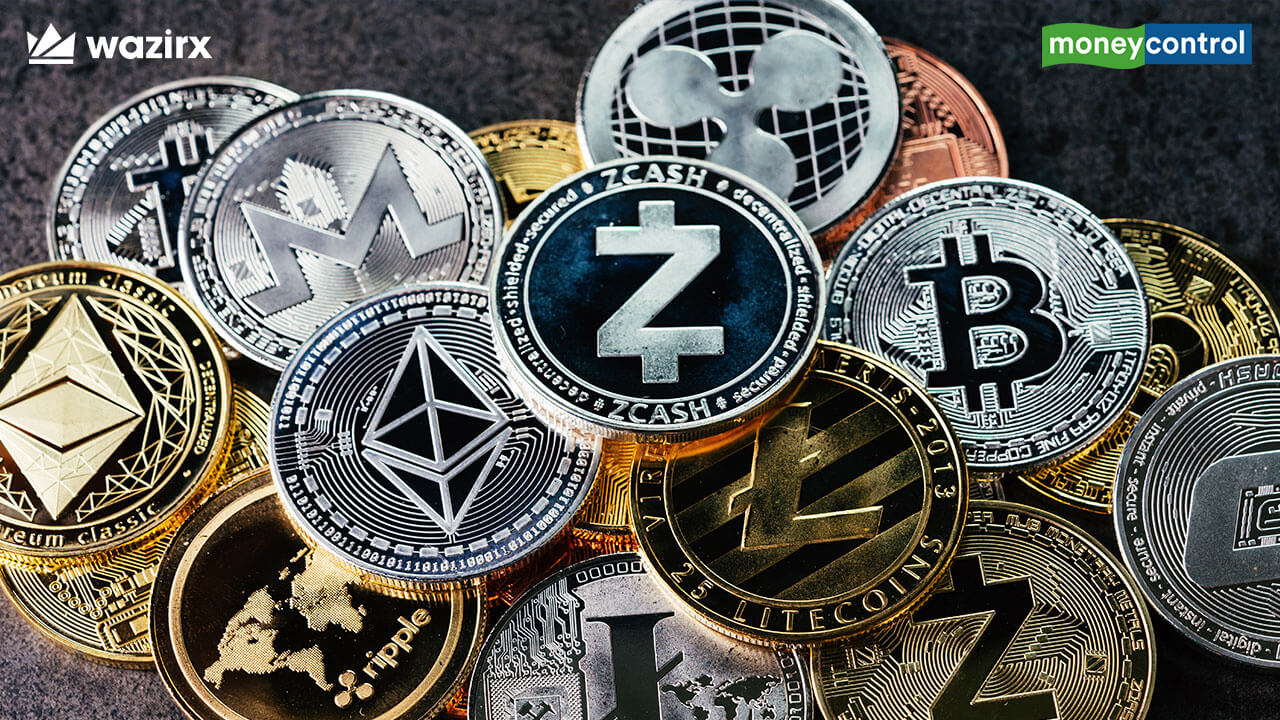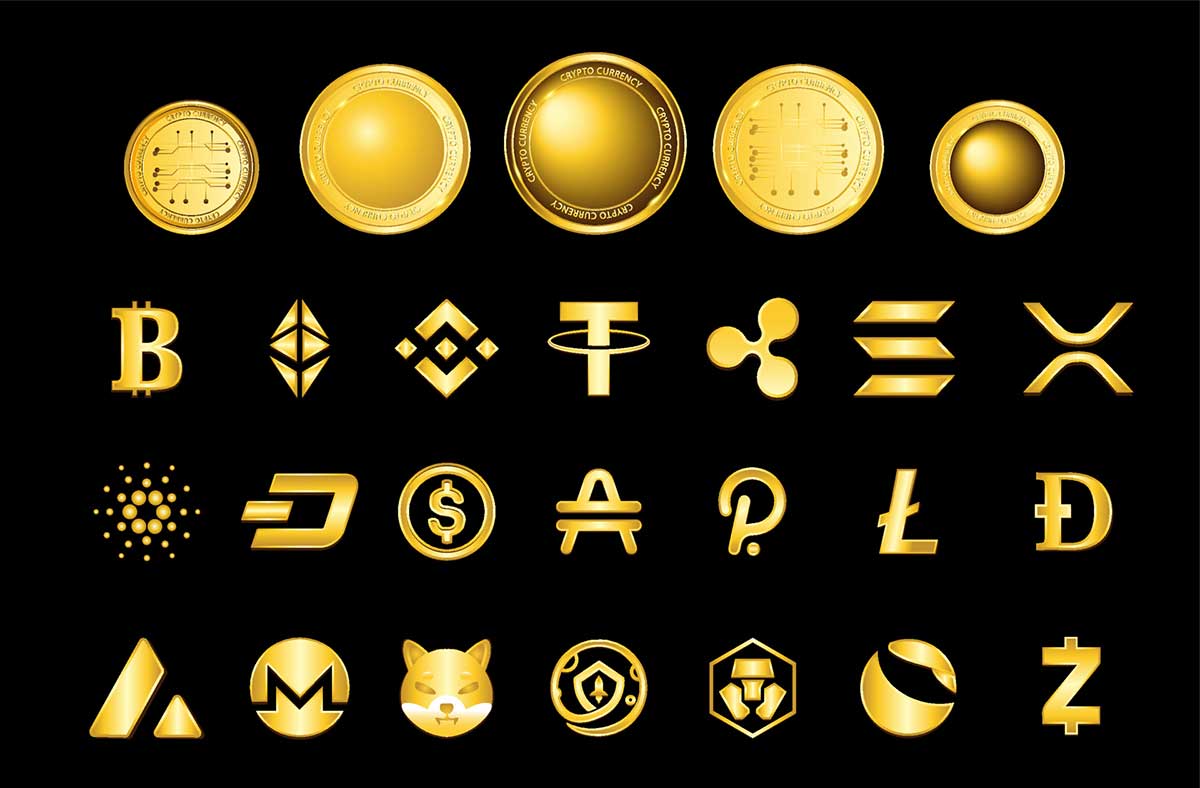How Does Blockchain Work for Dummies: A Simplified Guide.

Blockchain is a decentralized database technology. It is an innovative concept that lets many people agree on a single version of a digital ledger without requiring a central authority to preside over it.
This system can bear witness to a series of digital events in a manner that is transparent, highly resistant to manipulation, and is open to access to everyone. With blockchain, you need not rely on intermediaries or middlemen, which makes the system secure and permanent by design.
In this article, we’ll be discussing how blockchain works in simple terms, so even a beginner can grasp its fundamental concepts.

Credit: www.moneycontrol.com
What Is Blockchain?
Explanation Of The Concept Of A Distributed Ledger
Blockchain is a distributed ledger that records transactions through a network of linked computers. Each participant on the network has a copy of the entire ledger that is updated every time a new transaction is made. This means that every participant can see every transaction in real-time.
Here are some key points to remember about distributed ledger:
- It is decentralized, meaning there is no single entity in control of the ledger.
- It allows for transparency and real-time updates.
- It makes fraudulent activities difficult because every participant has a copy of the entire ledger, making it almost impossible to manipulate.
Comparison Between Traditional Databases And Blockchain
Traditional databases are controlled by a central authority, such as a bank, and are often vulnerable to manipulation and fraud. Blockchain, on the other hand, is decentralized, secure and tamper-proof. Here are some more differences between traditional databases and blockchain:
- Traditional databases are based on a client-server architecture, while blockchain is based on peer-to-peer architecture.
- Traditional databases work on a need-to-know basis, while blockchain works on a need-to-share basis.
- Traditional databases are vulnerable to cyber attacks, while blockchain uses cryptographic algorithms to secure data.
Why Blockchain Is More Secure
Blockchain is considered more secure than traditional databases due to the following reasons:
- It operates on a decentralized network, where every participant has a copy of the entire ledger. This incredibly reduces the risk of data loss, making it almost impossible to manipulate the data.
- The data stored in blockchain is tamper-proof, meaning that no one can alter it without the participants knowing. The data is secured with cryptographic algorithms, making it nearly impossible to break.
- Every transaction is verified by the network of participants, making it incredibly difficult to modify or cheat the system.
Blockchain is a revolutionary technology that is changing how we perceive data security and transparency. With its advanced cryptographic algorithms and decentralized structure, it ensures the integrity of the data, thereby making it one of the most secure technologies out there.
How Does Blockchain Work?
Blockchain is a distributed ledger technology that allows parties to transact without the need for a trusted intermediary. It relies on a network of computers to validate and record transactions, which are then encrypted and stored in blocks. Each block contains a unique code called a hash, which connects it to the previous block in the chain, forming an unbreakable link.
Proof Of Work Vs. Proof Of Stake
Blockchain relies on a consensus mechanism to validate and record transactions. Two common consensus mechanisms are proof of work (pow) and proof of stake (pos).
- Pow involves solving complex mathematical puzzles to validate transactions and add them to the blockchain. Miners compete to solve these puzzles, and the winner is rewarded with cryptocurrency. Pow is computationally intensive, requires a lot of energy, and is slow.
- Pos involves validators putting up a stake, which can be used as collateral if they validate fraudulent transactions. Validators are selected at random to validate and add transactions to the blockchain. Pos is more energy-efficient than pow and is faster.
How Verification And Validation Happen In Blockchain
Blockchain relies on nodes or computers on the network to verify and validate transactions. Nodes act as validators and work together to confirm transactions and add them to the blockchain. It is important to note that only transactions that meet certain requirements are added to the blockchain.
- Each transaction is broadcast to the network and must be verified by a majority of nodes.
- Nodes check that the transaction is valid and that the sender has sufficient balance to complete the transaction.
- Once a transaction is verified, it is added to a block and added to the existing chain of blocks.
Description Of Consensus Mechanism
A consensus mechanism is the process by which transactions are validated and recorded on the blockchain. It ensures that all nodes on the network agree on the state of the blockchain. This is achieved through a process of verification and agreement among the nodes.
- Blockchains use different consensus mechanisms, such as pow, pos, and others.
- Consensus mechanisms are important in blockchain because they prevent double-spending and ensure that the network remains secure.
Blockchain allows parties to transact directly with each other, without the need for a central authority. It relies on a network of computers to verify and validate transactions, which are then recorded on a distributed ledger. Consensus mechanisms such as pow and pos are used to ensure agreement among the nodes on the network and to maintain the integrity of the blockchain.
Blockchain Applications
Blockchain technology’s adaptability is one of its main advantages over conventional databases. Although originally designed for cryptocurrencies, blockchain is now employed in a variety of industries and areas thanks to its unique characteristics. Let’s take a look into the most popular use cases of blockchain technology.
Blockchain In Cryptocurrencies
Blockchain is synonymous with bitcoin, the cryptocurrency giant that introduced this technology to the world. Bitcoin, on the other hand, is just one of the many cryptocurrencies that employ blockchain technology. The decentralised nature of blockchain means that it can easily make transactions without the need for intermediaries.
Some of the key benefits of using blockchain in cryptocurrencies are:
- It offers a high degree of security and transparency in financial transactions.
- Blockchain eliminates the hassle of middlemen, simplifying and speeding up the settlement procedure.
- The technology is decentralised, providing cryptocurrency creators and consumers more control over their money.
Blockchain For Supply Chain Management
With its traceability and capacity to establish a direct connection between parties, blockchain is ideal for supply chain management. Supply chain management is the key component of any business that sells or produces goods. It involves tracking goods through various stages until they reach the consumer.
Some of the key benefits of using blockchain for supply chain management include:
- Enhancing supply chain efficiency, accuracy, and transparency while also increasing trust.
- Eliminating intermediaries and reducing the risk of counterfeit products or fraud.
- Blockchain enables prompt reaction and efficient resolution of issues as it creates traceability and transparency in the supply chain.
Blockchain For Secure Data Storage
Data security is a major concern for today’s companies as cyberattacks become more frequent. Data breaches can result in the loss of sensitive material, resulting in significant financial and reputational damages. Blockchain’s immutable ledger technology has the potential to address these issues by providing secure data storage.
Here are some of the benefits:
- Blockchain technology provides secure data storage with immutability and decentralisation, eliminating the need for a centralised authority to store data.
- Data breaches can be prevented due to the high level of security provided by blockchain.
- The cost of maintaining and storing data is reduced due to the elimination of intermediaries.
We’ve looked at how blockchain technology is transforming various industries, including cryptocurrencies, supply chain management, and secure data storage. Blockchain has the potential to revolutionise a wide range of sectors by reducing intermediaries, increasing transparency, and improving traceability and security.
In today’s rapidly changing market, blockchain is worth considering for any business looking to gain a competitive advantage.
Advantages And Disadvantages Of Blockchain
Advantages: Transparency, Security, Decentralization, Etc.
Blockchain technology provides several advantages that make it appealing to various industries. Here are some of its advantages:
- Transparency: All the transactions made on a blockchain are publicly visible and cannot be altered once added to the network, making it a tamper-proof system. This enhances transparency and accountability, allowing for a more democratic and fair distribution of resources.
- Security: Blockchain technology uses cryptographic algorithms that ensure maximum security. Every transaction on the blockchain is verified before being added to the network, making it impossible to tamper with the system. This dramatically reduces fraud and cyber-attacks, improving the overall security of the network.
- Decentralization: Decentralization is one of the most significant advantages of blockchain technology. The blockchain is maintained by a network of nodes that validate transactions, eliminating the need for intermediaries. This reduces the risk of central points of failure and censorship, making it a more democratic system.
- Efficiency: Blockchain technology provides a more efficient way of conducting business by eliminating intermediaries and reducing transaction times. This results in cost savings for companies and faster transactions for users.
Disadvantages: Complexity, Scalability Issues, Energy Consumption
Despite the advantages, blockchain technology has its limitations. Here are some of the disadvantages:
- Complexity: Blockchain technology is not easy to understand and requires high-level technical knowledge to implement and manage. As the technology is still evolving, there is a scarcity of experienced developers, which can hinder the adoption of blockchain-based solutions by businesses.
- Scalability issues: Blockchain technology is facing scalability issues due to its distributed nature. As the number of transactions increases, the blockchain network can become congested, resulting in slower transaction times and higher transaction fees. This is a significant limitation for blockchain-based solutions looking to achieve mainstream adoption.
- Energy consumption: Blockchain technology requires a significant amount of energy to maintain the network. The proof of work consensus mechanism used by bitcoin, for example, consumes more energy than small countries. This is a significant concern for the environmental impact and the overall sustainability of the technology.
Blockchain technology is not a silver bullet solution for all problems, but it has the potential to revolutionize various industries. It’s important to understand the advantages and disadvantages of blockchain technology to determine if it’s the right solution for your business or application.
Frequently Asked Questions On How Does Blockchain Work For Dummies
What Is Blockchain Technology?
Blockchain technology is a way of recording data across a network of computers, making it impossible to alter, hack, or cheat the system. It is essentially a digital ledger of transactions that can be programmed to record anything of value.
What Are Some Of The Key Features Of Blockchain?
Some key features of blockchain technology include decentralization, transparency, immutability, security, and interoperability. Each node in the network maintains a copy of the ledger, and transactions are verified by consensus among the nodes rather than a central authority.
How Does Blockchain Ensure Security?
Blockchain ensures security through cryptographic techniques such as hashing, digital signatures, and consensus mechanisms. Each block contains a unique cryptographic hash of the previous block, creating an unbreakable chain. Transactions are verified by consensus rather than a central authority, minimizing the risk of fraud.
What Are Smart Contracts In Blockchain?
Smart contracts are self-executing contracts that are programmed to automatically enforce the terms of an agreement without the need for intermediaries. They are built on blockchain technology and can be used to automate business processes, enforce rules, and facilitate secure digital interactions between parties.
Can Blockchain Be Used Beyond Cryptocurrencies?
Yes, blockchain technology has a wide range of applications beyond cryptocurrencies, including supply chain management, digital identity verification, voting systems, intellectual property management, and more. It can be used in any situation where transparency, security, and accountability are important.
Conclusion
After reading this article, you probably have a better understanding of blockchain technology. As we’ve seen, blockchain is an innovative way to maintain data and information that ensures transparency and security. By using a decentralized system and verifying transactions through a network of computers, blockchain eliminates the need for intermediaries and enhances transparency.
This technology has already been adopted by various industries, and it has the potential to disrupt many more. Understanding blockchain is becoming increasingly important for individuals and businesses alike. As blockchain continues to evolve and advance, we can expect to see more widespread adoption and further disruption in various industries.
The possibilities of blockchain are endless, and we can’t wait to see what the future holds for this exciting technology.







